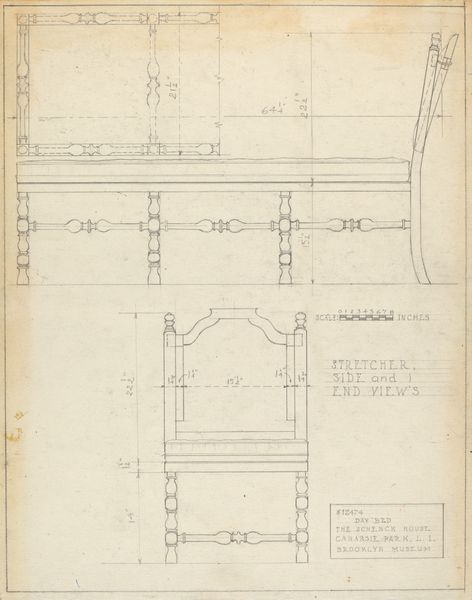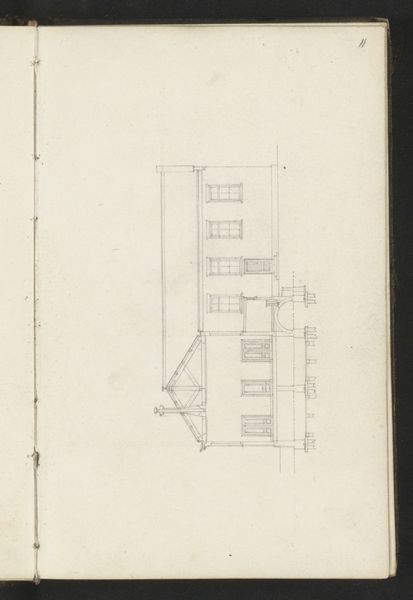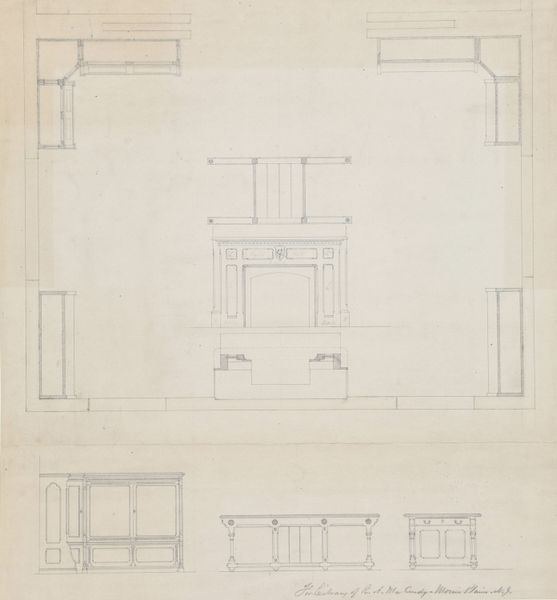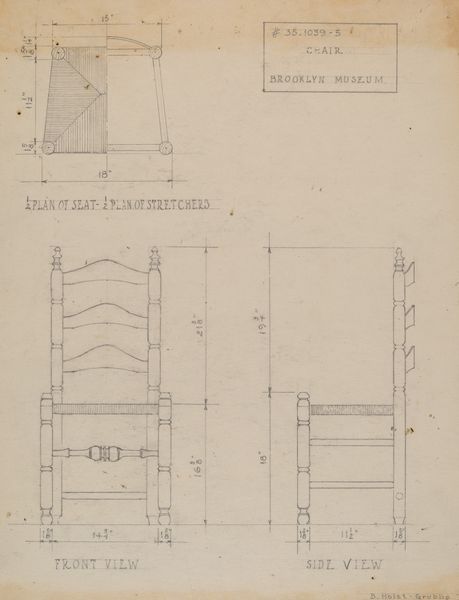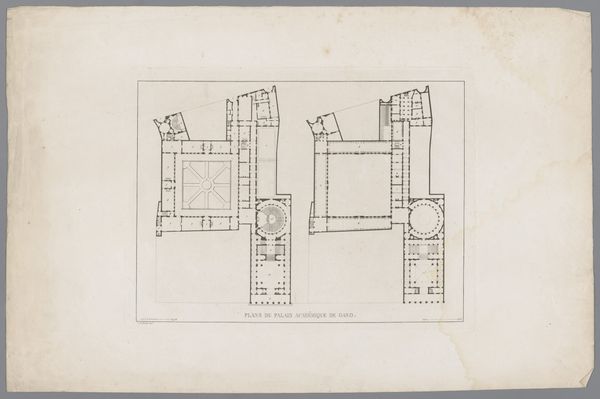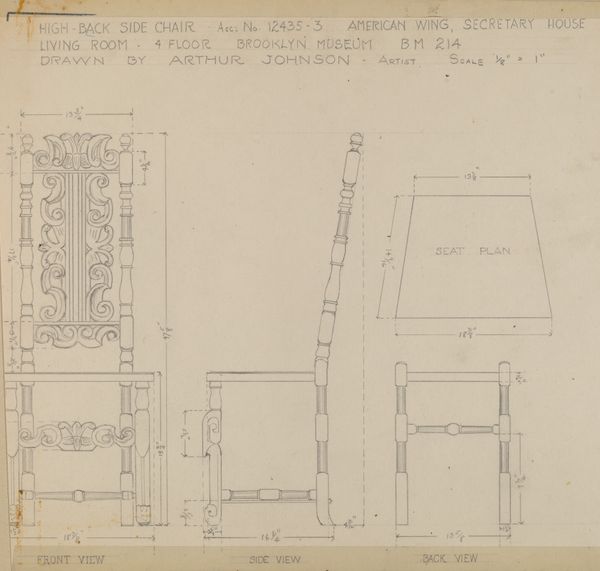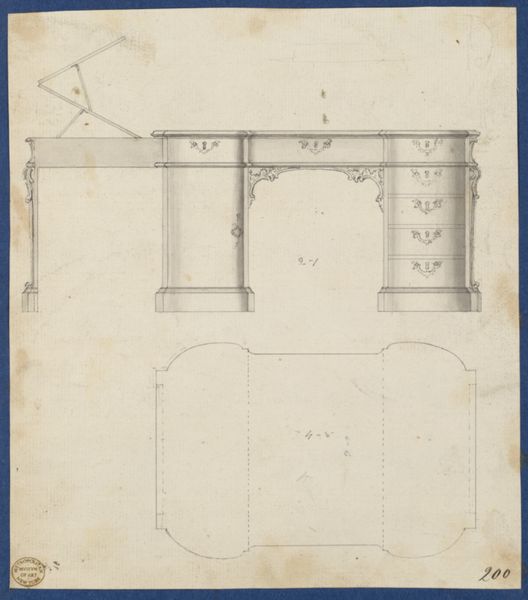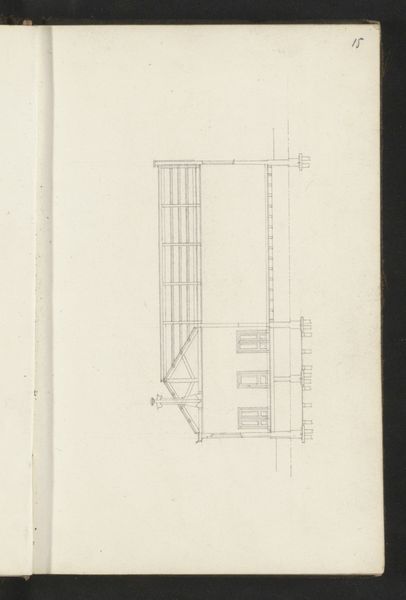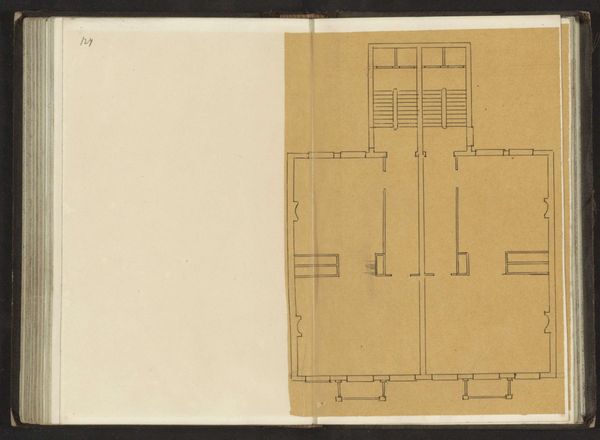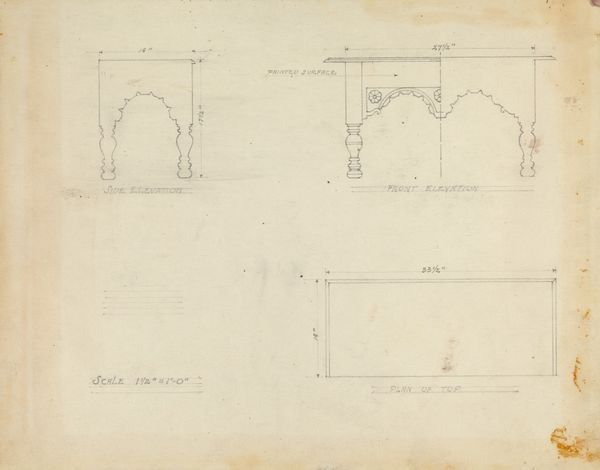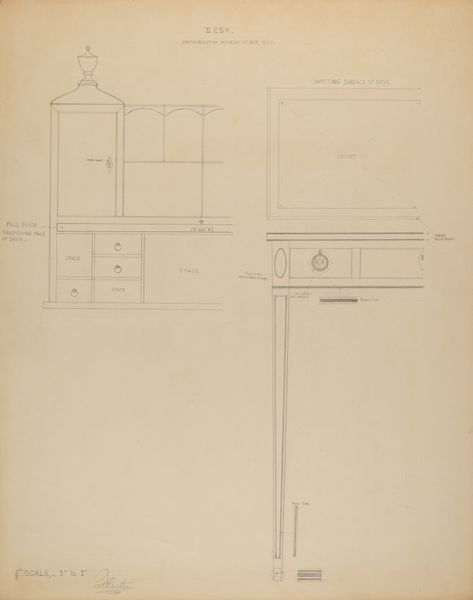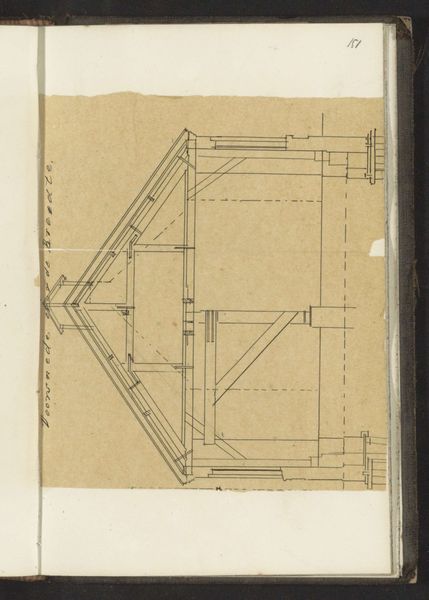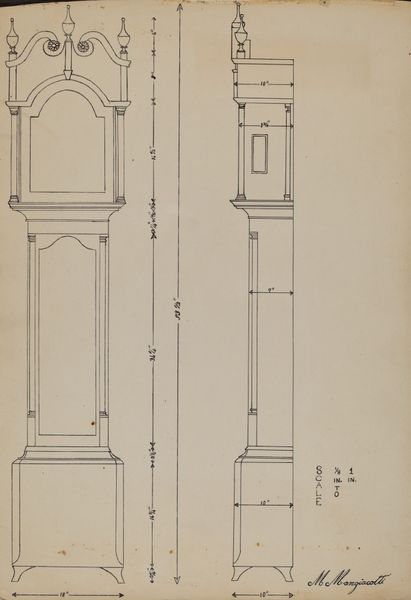
drawing, paper, pencil
#
drawing
#
paper
#
geometric
#
pencil
#
academic-art
Dimensions: overall: 26.6 x 20.2 cm (10 1/2 x 7 15/16 in.) Original IAD Object: 36 1/2"high. Height of body is 20", top is 30 1/2 x 18 1/2.
Copyright: National Gallery of Art: CC0 1.0
Curator: This is a fascinating object, titled "Chest on Frame." The drawing on paper, rendered in pencil by B. Holst-Grubbe around 1937, offers a very meticulous depiction of furniture. It's quite striking in its academic approach, with its clean lines and geometric shapes. Editor: Yes, my initial impression is one of austere functionality. The cool detachment and blueprint style, emphasize precision and planning, as though extracting any sense of craft in itself and giving center stage to the function of things. There's something deeply intellectual and almost coldly rational about the composition. Curator: Indeed, the visual language here evokes more than just practical schematics; the symbolism of "home", here the "Bed Room, Sewal House, Secretary M", is fascinating. Could it relate to class dynamics of that era, do you think? An intimate glimpse into an office space—likely of a person of authority? The image is itself an architectural symbol representing authority, which is in turn an icon for the patriarchal structures of governance at the time... Editor: I see your point, but let's consider how those spooled legs carry cultural weight, going far beyond the social-economic factors and power. The repetitive form in the legs echo classical columns, implying longevity and steadfastness – foundations not just for furniture, but also cultural traditions and heritage. The "chest" itself could symbolize security and preservation: think of family heirlooms, stories locked inside. It might relate to a sense of history, of carrying the weight of the past into the present. Curator: That is insightful: the piece’s visual repetition of similar yet slightly varying shapes, further accentuates a sort of “grounded” stability. How do you think these design features influenced the culture of that period, in domestic settings of a more priviledged individual at the time? It appears Holst-Grubbe focused heavily on the front and end views of the design rather than offering further design elements that catered to newness of the early-20th century artistic style? Editor: What feels most evocative about it, for me, is the overall preservation aspect...as well as the repetition in symbolism across several levels. This blueprint reminds us of that human need to contain and catalogue our stories in concrete form. As viewers, we have access to all facets, much as the house's secretary or even designer. Curator: Looking again, what first seemed cold is indeed deeply layered. I see the fusion between structure and societal storytelling through the ages. It's a remarkable statement. Editor: I agree. These details transform my original impression and provide greater depth. Thank you.
Comments
No comments
Be the first to comment and join the conversation on the ultimate creative platform.
